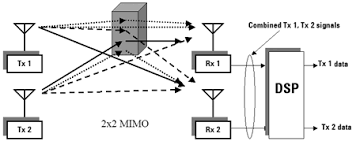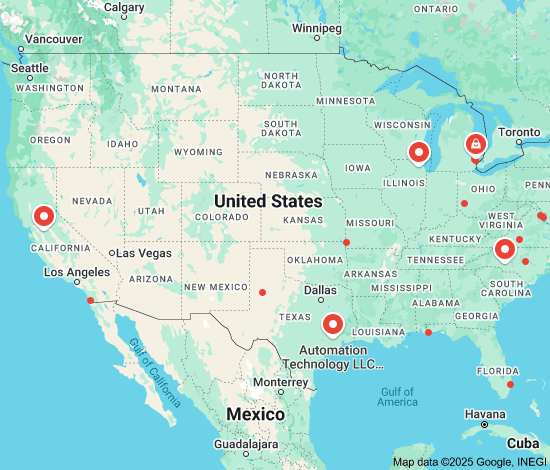
Unleashing the Power of MIMO Technology in Wireless Communications
The Revolutionary MIMO Technology: Enhancing Wireless Communications
Multiple Input Multiple Output (MIMO) technology has been a game-changer in the world of wireless communications, revolutionizing how data is transmitted and received over wireless networks. MIMO technology utilizes multiple antennas at both the transmitter and receiver to improve communication performance significantly.
One of the key advantages of MIMO technology is its ability to increase data throughput and signal reliability. By using multiple antennas to transmit and receive data simultaneously, MIMO systems can achieve higher data rates and better signal quality compared to traditional single-antenna systems.
Furthermore, MIMO technology enables spatial multiplexing, allowing multiple data streams to be transmitted concurrently over the same frequency band. This results in improved spectral efficiency and overall network capacity, making it ideal for high-speed data applications such as video streaming, online gaming, and large file transfers.
In addition to enhancing data rates and network capacity, MIMO technology also offers improved coverage and robustness in challenging wireless environments. By exploiting spatial diversity through multiple antennas, MIMO systems can mitigate fading effects and improve signal reception quality, especially in areas with obstacles or interference.
Moreover, advancements in MIMO technology have paved the way for the development of next-generation wireless standards such as 4G LTE, 5G, and Wi-Fi 6. These standards leverage MIMO techniques to deliver higher performance, lower latency, and better connectivity for users across various devices and applications.
As the demand for faster and more reliable wireless communications continues to grow, MIMO technology remains at the forefront of innovation in the telecommunications industry. Its ability to boost data rates, improve coverage, and enhance spectral efficiency makes it a crucial component in shaping the future of wireless networks.
6 Benefits of MIMO Technology: Boosting Data Throughput, Reliability, and Network Performance
- Increased data throughput
- Improved signal reliability
- Enhanced spectral efficiency
- Better network capacity
- Improved coverage in challenging environments
- Support for high-speed data applications
Challenges of MIMO Technology: Complexity, Costs, and Compatibility Issues
- Complexity in implementation and deployment, requiring careful planning and optimization.
- Increased hardware costs due to the need for multiple antennas and signal processing components.
- Susceptibility to interference and multipath propagation, which can degrade signal quality.
- Limited effectiveness in non-line-of-sight (NLOS) environments or densely populated areas.
- Higher power consumption compared to traditional single-antenna systems, impacting battery life in mobile devices.
- Compatibility issues with older devices that do not support MIMO technology, leading to reduced performance in mixed networks.
- Challenges in achieving optimal performance without proper antenna alignment and configuration.
Increased data throughput
One significant advantage of MIMO technology is its ability to significantly increase data throughput. By utilizing multiple antennas for simultaneous data transmission and reception, MIMO systems can achieve higher data rates compared to traditional single-antenna systems. This enhanced data throughput not only allows for faster and more efficient communication but also improves overall network performance, making it ideal for bandwidth-intensive applications such as video streaming, online gaming, and large file transfers. The increased data throughput provided by MIMO technology plays a crucial role in meeting the growing demand for high-speed and reliable wireless connections in today’s digital age.
Improved signal reliability
One of the key advantages of MIMO technology is its ability to enhance signal reliability in wireless communications. By utilizing multiple antennas to transmit and receive data simultaneously, MIMO systems can mitigate signal fading and improve reception quality, especially in challenging environments with obstacles or interference. This increased reliability ensures a more stable connection for users, reducing the likelihood of dropped calls, slow data speeds, or interrupted video streams. Overall, the improved signal reliability offered by MIMO technology enhances the user experience by providing a more consistent and dependable wireless connection.
Enhanced spectral efficiency
MIMO technology’s enhanced spectral efficiency is a significant advantage that allows for the transmission of multiple data streams over the same frequency band simultaneously. By utilizing multiple antennas to spatially multiplex data, MIMO systems can maximize the utilization of available spectrum, leading to higher data rates and increased network capacity. This improved spectral efficiency not only enhances overall system performance but also enables more efficient use of limited wireless resources, making MIMO technology a crucial tool in optimizing wireless communications for various applications and environments.
Better network capacity
MIMO technology’s ability to enhance network capacity is a significant advantage in the realm of wireless communications. By utilizing multiple antennas to transmit and receive data concurrently, MIMO systems can increase the overall throughput and efficiency of wireless networks. This improved network capacity allows for more data to be transferred simultaneously, leading to faster speeds, reduced congestion, and better performance for users accessing various online services and applications. The increased network capacity provided by MIMO technology plays a crucial role in meeting the ever-growing demands for high-speed connectivity in today’s digital age.
Improved coverage in challenging environments
MIMO technology offers a significant advantage in enhancing coverage in challenging environments by utilizing multiple antennas to mitigate fading effects and improve signal reception quality. This capability allows MIMO systems to provide robust and reliable wireless connectivity even in areas with obstacles or interference, ensuring that users can maintain a stable connection and experience consistent performance across various locations. By leveraging spatial diversity through multiple antennas, MIMO technology effectively addresses the challenges posed by difficult wireless environments, making it an essential tool for extending network coverage and improving user experience in diverse settings.
Support for high-speed data applications
MIMO technology’s support for high-speed data applications is a significant advantage that has transformed the way data is transmitted over wireless networks. By utilizing multiple antennas to transmit and receive data simultaneously, MIMO systems can achieve faster data rates, making it ideal for bandwidth-intensive tasks such as video streaming, online gaming, and large file transfers. This capability not only enhances the user experience by providing seamless connectivity for high-speed applications but also increases overall network capacity and efficiency, meeting the growing demand for faster and more reliable wireless communications in today’s digital age.
Complexity in implementation and deployment, requiring careful planning and optimization.
One significant drawback of MIMO technology is the complexity involved in its implementation and deployment, which necessitates meticulous planning and optimization. Integrating multiple antennas at both the transmitter and receiver ends, as well as coordinating signal processing algorithms, can be a challenging task that requires expertise and careful consideration. Ensuring seamless operation and maximizing the benefits of MIMO technology often involves thorough site surveys, channel modeling, interference management, and fine-tuning of system parameters. The intricacies of deploying MIMO systems can lead to increased costs, longer deployment times, and potential performance issues if not executed with precision.
Increased hardware costs due to the need for multiple antennas and signal processing components.
One significant drawback of MIMO technology is the increased hardware costs associated with its implementation. The requirement for multiple antennas and signal processing components in MIMO systems can lead to higher manufacturing expenses and deployment costs for wireless communication infrastructure. This additional hardware complexity not only raises the initial investment needed for setting up MIMO-enabled devices but also increases maintenance and operational expenses over time. As a result, the cost factor poses a challenge for widespread adoption of MIMO technology in certain applications and industries where budget constraints are a concern.
Susceptibility to interference and multipath propagation, which can degrade signal quality.
One significant drawback of MIMO technology is its susceptibility to interference and multipath propagation, which can lead to a degradation in signal quality. Interference from other wireless devices or signals in the surrounding environment can disrupt the transmission and reception of data across multiple antennas, affecting the overall performance of the MIMO system. Additionally, multipath propagation, where signals take multiple paths to reach the receiver due to reflections and scattering, can result in signal fading and distortion, further compromising the reliability and robustness of the communication link. These challenges highlight the need for effective interference mitigation techniques and signal processing algorithms to address the impact of interference and multipath propagation on MIMO systems.
Limited effectiveness in non-line-of-sight (NLOS) environments or densely populated areas.
One significant drawback of MIMO technology is its limited effectiveness in non-line-of-sight (NLOS) environments or densely populated areas. In these scenarios, where obstacles or interference obstruct the direct path between transmitter and receiver, the benefits of using multiple antennas for spatial diversity may be diminished. The presence of obstacles can cause signal reflections, diffractions, and multipath fading, leading to signal degradation and reduced performance of MIMO systems. In densely populated areas with high levels of interference from other wireless devices, the ability of MIMO technology to exploit spatial multiplexing and achieve higher data rates may be compromised. As a result, the effectiveness of MIMO technology in NLOS environments or densely populated areas is a critical consideration in optimizing wireless communication systems for real-world deployment.
Higher power consumption compared to traditional single-antenna systems, impacting battery life in mobile devices.
One notable drawback of MIMO technology is its higher power consumption when compared to traditional single-antenna systems. The use of multiple antennas for simultaneous data transmission and reception requires more energy, which can significantly impact the battery life of mobile devices. This increased power demand may lead to quicker battery drain, requiring users to recharge their devices more frequently. As mobile devices increasingly rely on wireless connectivity for various tasks, the trade-off between improved performance and reduced battery life due to MIMO technology remains a challenge for device manufacturers and users alike.
Compatibility issues with older devices that do not support MIMO technology, leading to reduced performance in mixed networks.
One significant drawback of MIMO technology is the compatibility issues it poses with older devices that do not support MIMO technology. In mixed networks where both MIMO-enabled devices and legacy devices coexist, the presence of non-MIMO devices can lead to reduced performance and efficiency. Since MIMO systems rely on multiple antennas to achieve their benefits, older devices may struggle to communicate effectively with MIMO-enabled devices, resulting in slower data rates, increased latency, and overall degraded network performance. This compatibility issue highlights a challenge in transitioning to newer wireless technologies while ensuring seamless integration with existing infrastructure and devices.
Challenges in achieving optimal performance without proper antenna alignment and configuration.
One significant challenge associated with MIMO technology is the requirement for precise antenna alignment and configuration to achieve optimal performance. Without proper alignment and setup, the benefits of MIMO, such as increased data throughput and signal reliability, may not be fully realized. Inadequate antenna positioning or configuration can lead to signal interference, reduced coverage, and degraded overall network performance. Ensuring that antennas are correctly aligned and configured poses a technical hurdle for implementing MIMO systems effectively, highlighting the importance of meticulous planning and calibration to maximize the advantages of this advanced wireless communication technology.

